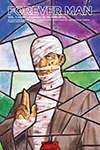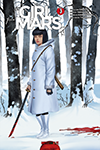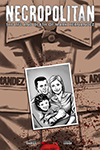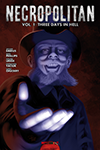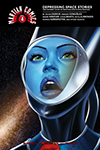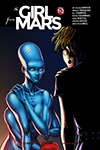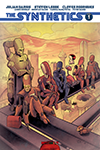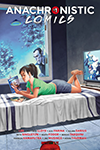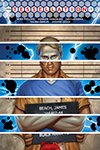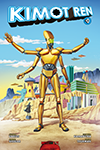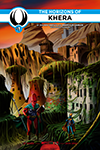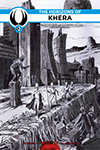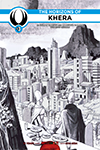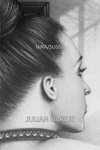Dreamed on 15 Jan 2013.
I was at my parents’ house, helping them move electronics around the living room. Everything we moved had other things behind it, flattened cardboard boxes propped up against the wall, and the wires for the various devices were all tangled. After much work, I had to stop. I couldn’t solve this for them. I abandoned the room in disarray, leaving cabinets and devices moved but not plugged in.
It was winter, and we were supposed to go to a party that night at the house of a couple my parents had known for many years. This couple always threw a Christmas party, and my parents usually went. They’d taken me several times, as a young adult and sometimes when I was home for the holidays, and we’d always had a good time. But my parents weren’t ready to leave. After the botched job moving furniture, I needed to get out. So I decided to walk.
It was night, and I headed through the snowy woods near my parents’ house, towards the subdivision on the other side. When I emerged onto the streets beyond the trees, I didn’t recognize where I was. So I started wandering, first along the streets and then between the houses, searching for a landmark. It all seemed vaguely familiar, but nothing I could use to navigate.
Walking through a wide grassy area behind people’s houses, I felt frustrated and turned to head out to the street. But when I got closer, I could see there was no egress. A tiny wedge-shaped house filled most of the space between the houses, and it was fenced on either side, near the street. I approached, intent on climbing the fence and getting out onto the street.
Only the front of the little house was fenced, and the fence enclosed only the tiniest patch of land. On its back side nearest me, the fence was only about five feet wide between the houses, and it ran flush with the front side of the wedge-shaped house. The land inside the fence was elevated, and rose further over the few feet from the house to the street. Nothing grew there but little patches of grass, along the fence’s edges. The house sat on a curve in the street (hence the house’s wedge shape), so the far side of the fence, along the street, was not only several feet higher but several feet longer. It seemed like a mockery of a front yard, but it didn’t disturb me.
I climbed the rear if the fence and walked the few feet to the tiny concrete landing in front of the house’s front door. It had a Christmas wreath on it, and I recognized immediately that this was a house with children in it — a family home. It felt happy and warm. It pleased me that they were happy there, even though the house seemed like the smallest, oddest house, a wedge of a home lower than the street, with a tiny enclosed dirt pile for a yard — certainly not someplace I would want to live. Hoping not to be seen, I walked up the few steps from the door to the street, opened the gate in the fence there, and stepped onto the road. I didn’t look back.
Only then did I remember my cellphone and use it to get directions to the party. The house of my parents’ friends had been just up the street to the left of where I’d emerged from the woods. I was standing as far away from where I’d emerged, only in another direction, as my destination had been. I felt old and silly, to not have thought of using my cellphone sooner.
The two-story house was warm and bright and filled with people, drinking and having a good time, but I didn’t know anyone. I took off my coat and set it with the others, because I thought I should.
I thought my parents would join me soon. But as I wandered through the house, my father called my cellphone. He sounded drunk, which is unlike him, and I realized that he thought I was the husband of the family that owned the house. He talked with me for several minutes, making drunken observations as I wandered through the house. I didn’t disguise my voice, but I didn’t correct him either. I kept thinking he would realize who I was, but he never did. When he hung up, I felt sad.
In a group of young people, each perhaps twenty years old, I recognized a girl I’d loved and had sex with some years before. She didn’t look like she does now. She didn’t quite look like how she did, when I’d loved her, either. She looked as if only two years had passed. We smiled and talked briefly, but she was distracted by her friends, and I drifted back into the party.
I spotted a French professor I’d had, even before I’d met that girl, but he didn’t see me. Hoping to speak with him, I followed him through the house, but he didn’t stop. Instead, he went into a room I hadn’t seen, where up and down escalators conveyed people into a basement. I followed him down.
At the base of the escalators was what looked like a concrete floor, and it had a wooden wall to its left that looked like it could have been a basement wall. But as the escalator took me further down, I could see it wasn’t a concrete floor at all, but rather an elevated concrete platform many stories high. Beyond it, I could see another sun, reflected across the glass of dozens of skyscrapers. The ceiling was concrete, but instead of extending beyond the platform’s edge, it stopped there. There was another world down here, filled with people carrying bags, as if they were at a shopping mall, and not at all dressed for the cold. Wherever this was, it wasn’t winter here.
The professor, ahead of me on the escalator, got off and walked to the left, to a door in the wooden wall, and entered. When I got off the escalator, I went to the same door. It was wooden but ornate, with sliding windows of different shapes and sizes, tiny gold plaques with writing on them, and dials of some sort. The result was baffling.
I opened the door. There was no doorknob on the inside, and the door itself was only half an inch thin. It opened onto another door, little more than an inch behind the first one, but with different windows and plaques on it. I had the feeling that someone was watching, just inside those sliding windows, waiting for some codeword, or for me to open the right sliding window, to let me in. Not knowing what signal to give, I opened the second door, and behind it was a third, with different but equally baffling writing on it. I opened this, and behind it was another.
I must have gone six doors deep. I remember seeing all those doors, nested open against one other to my left, and thinking it didn’t look this hard for my former professor.
I could hear the sounds of people talking and drinking happily inside, as if the door in front of me and the door frame to the right of me were almost wafer-thin. Again, I had the sense that someone was watching me from behind the door, waiting for me to say or do the right thing. I got the sense that there hadn’t been another door behind each door, until I opened each one. But I also felt that this hadn’t necessarily been because I was making mistakes. Perhaps the first-time visitor had to prove himself, door after door, until he entered.
I studied the door before me, intent on figuring out the code. At eye level were two inset areas, tall and rectangular but arched at their tops. Over one arch was a small arc of a plaque that read “KING,” and over the other a small plaque that red “QUEEN.” Within each inset area were multiple sliding windows, seemingly of random placements and size, some not larger than a square inch. Beyond these were tiny plaques of different shapes, with writing on them, including incomplete words or symbols. I felt that, if I could just say the right thing or open the right sliding window, or some combination of both, I could gain entry. But it was inscrutable, and there was no way of getting it right.
I walked away, so frustrated that I didn’t examine at the expansive new world of elevated concrete platforms, with shops around their edges, that lay behind the escalator. I abandoned all of this and went directly to the up escalator and back to the party.
Back upstairs, I wandered around the house and spotted the same young girl I’d seen before. Her friends weren’t around, and I struck up a conversation. I told her I was sad about what had passed between us, and that I’d loved her very much. She told me it was too late and that she had a boyfriend. One of her friends, a boy, came back and handed her a drink, and I could tell he was her boyfriend. It didn’t seem serious, nor she really in love, nor he very impressive. But this was what she’d chosen, or where she was in her life. She cared for me, but that door had closed.
Other young people wandered in and out, rejoining the others and departing without care, like they were only a loose group, which hadn’t arrived all together and might not leave together either. One of them suggested they leave to go see the carnival, and most agreed. I didn’t know what they were talking about, which they seemed to think a bit strange, but they assured me we could walk there. Word that they were leaving circulated among them, as young people came and went. I decided to go with them, and they welcomed me, though I felt like an outsider with them, my only linking being this girl who was with someone else.
As we left, I retrieved my coat, but I couldn’t find my shoes. Apparently, I’d taken them off when I entered, and there were scores of shoes lying about in a pile, but mine had either been pushed under something or been taken by someone else. It seemed unimaginable, to lose your shoes like this. But there was nothing to be done. Things are lost at parties, including shoes. I thought about how this must happen at many parties, and about all the lost shoes in the world, winding up on other people’s feet, carrying on in new homes as if nothing had happened, or left abandoned on telephone wires. I wonder what mine were doing, and if the world could be told in terms of shoes, not people. The young had no trouble finding their shoes, and they trickled out the door all while I looked for mine, so I gave up and followed them outside in my socks.
Outside, my feet weren’t cold at all, despite my concern. I walked with the others between some houses, not more than a block, and suddenly were were at a carnival, with booths and bright lights and games, and a boardwalk underneath our feet. I wondered why I hadn’t seen all of this before, as I wandered around. But it felt right that they’d know such a place was right there, all along, while I wouldn’t have seen it.
The girl I’d loved held hands with her young boyfriend, and I thought they probably wouldn’t remember each other in a year. I wondered if they knew it, or if they couldn’t tell the difference yet. It felt so melancholy to see them, but I accepted it. The other young people were mostly couples too, although they didn’t seem very close.
We wandered through the carnival, and being with them let me see it as they saw it, as something bright and charming to do, not simply as something crass and artificial and commercial.
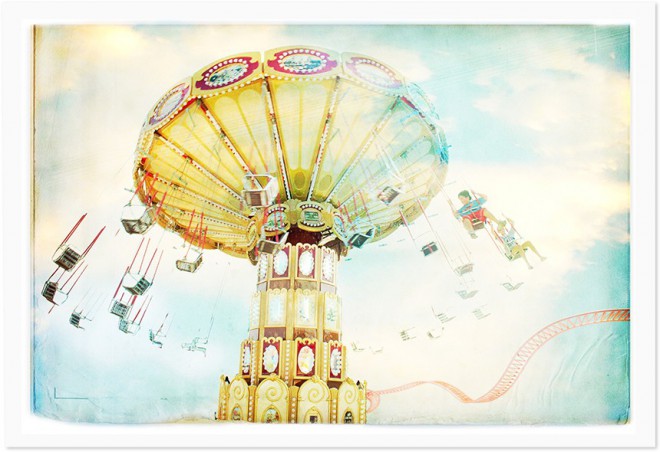 A song by the Killers played over the carnival loudspeakers, and it seemed everywhere, permeating everything, no feedback or distortion, like a soundtrack, no louder near the loudspeakers than not. (It sounded just like the Killers, and I was so convinced it was real that, when I woke, I searched for the lyrics online. But it was a Killers song that lived only in my dreams.) Here are the lyrics I remember:
A song by the Killers played over the carnival loudspeakers, and it seemed everywhere, permeating everything, no feedback or distortion, like a soundtrack, no louder near the loudspeakers than not. (It sounded just like the Killers, and I was so convinced it was real that, when I woke, I searched for the lyrics online. But it was a Killers song that lived only in my dreams.) Here are the lyrics I remember:
That’s okay.
We’ll take a lover in the afterlife.
We’ll be in paradise.And I said,
What’s that lyric that I like?
She only rolled her eyes.
We’ll be in paradise.
We were at the bottle toss when we decided to leave. The bottles were laid out under the booth’s big ceiling, covered with light bulbs, and it was so bright at night, even brighter than the other booths. A few smiling couples stood tossing rings at the tops of the bottles, and no one could pretend they were destined to be together, and no one could pretend the game wasn’t rigged, but it all looked so bright and happy in this beautiful but terribly fleeting way.
I walked ahead as we left, and the lyrics of the Killers song repeated forever in the carnival light, and I looked back, and that’s when the slow motion kicked in. And there was the girl I’d loved walking with her boyfriend, leaning into him, and behind them a young black girl with her white boyfriend a couple years older than herself, and following them a tail of nondescript young people, silhouetted by the lights of the bottle toss, and most of the them were smiling slightly, but none very much, and all of them were looking away from each other and unaware of being watched.
As they moved in slow motion, the image faded to black until just the lights behind them remained, bright as fireworks, and then that was black too. And as the image faded, the Killers song continued at normal speed, until it played in the melancholy darkness, like at the end of a movie, only instead of the credits rolling I woke up.
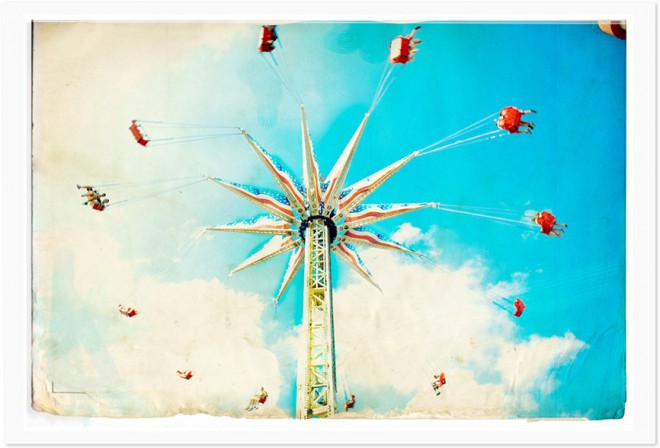 It was afternoon. I’d slept well, but my body ached, and with the song echoing in my mind, I thought of death.
It was afternoon. I’d slept well, but my body ached, and with the song echoing in my mind, I thought of death.





